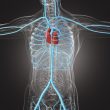In the field of percutaneous coronary intervention (PCI) and myocardial revascularization surgery (MRS), previous analyses have shown a link between in-hospital and 30-day complications, in terms of complicated progress and/or mortality. Most of this information comes from non-randomized or old studies, which translates into contradictory data. Researchers analyzed the EXCEL study, which included patients with...
Relationship Between Medical Treatment and Long-Term Clinical Results after Peripheral Vascular Intervention
Peripheral arterial disease (PAD) is one of the consequences of atherosclerosis, and it can cause pain in the limbs or tissue loss. Its treatment includes lifestyle changes such as exercise, statin therapy, antiplatelet therapy, antihypertensive medication (mainly ACE inhibitors or ARBs), and revascularization strategy. One in five patients with PAD will have experienced acute myocardial...
Arterial Patency in Femoropopliteal Disease with Drug-Eluting Balloons
Follow-up of drug-coated balloon angioplasty in femoropopliteal disease in a real-world population. Using drug-releasing devices has decreased the rate of restenosis in obstructive femoropopliteal lesions compared with conventional balloons or conventional stents (bare-nitinol stent, BNS). Both in the placement of BNS and of drug-eluting stents (DES) there is a mechanical risk of stent fracture or...
Stent Revascularization in Femoropopliteal Disease: An Analysis of Clustered Randomized Trials
A study compared pooled data of claudication and critical ischemia patients treated with stenting vs. by-pass surgery in femoropopliteal disease. The main objective of revascularization in femoropopliteal disease is to improve the quality of life and functional capacity of claudication patients who did not respond to medical treatment, and to save the affected limb in...
Long-Term Evolution of Hybrid Coronary Revascularization
Currently, myocardial revascularization surgery (MRS) and percutaneous coronary intervention (PCI) are the available strategies for multivessel coronary artery disease. However, an alternative strategy has long been developed, called hybrid coronary revascularization (HCR), where the anterior descending artery is bypassed with a graft from the mammary artery and the rest of the lesions are treated by...
Safety of Atherectomy in Femoropopliteal Disease
Peripheral artery disease hinders patient quality of life extensively. In advanced stages, such as critical lower limbs ischemia (CLLI), it could yield an increased risk in major cardiovascular events, as well as limb-related events (amputation or repeat revascularization), making treatment with revascularization paramount in these cases. Calcification is a predictor of revascularization failure, which is...
BEST-CLI: Revascularization of Critical Lower Limb Ischemia, a Pragmatic Study
Critical lower limb ischemia (CLLI) is associated with a major deterioration in quality of life and a significant increase in morbidity and mortality. Its estimated annual incidence is 220 to 3500 cases per million people, with an expected prevalence of 11% of patients with peripheral arterial disease. CLLI is the “terminal” stage of peripheral artery...
Clinical Results of IVUS-Guided Drug-Eluting Stent Implantation in Femoropopliteal Disease
Endovascular treatment of femoropopliteal lesions has become the first-line treatment due to the development of devices that decrease the restenosis rate. Recently, the IMPERIAL study showed greater patency at 1 year and greater freedom from clinically guided revascularization at 2 years in favor of the ELUVIA stent (paclitaxel-eluting fluoropolymer, FP-DES) compared with the ZILVER PTX...
Are Elevated Lipoprotein (a) Levels Associated with Increased Adverse Events After Peripheral Endovascular Treatment?
Peripheral arterial disease is a manifestation of systemic atherosclerotic disease with increasing prevalence. Moreover, this disease is associated with a high risk of mortality and cardiovascular events. Lipoprotein (a) (Lp a)—which has a proatherogenic, proinflammatory, and antifibrinolytic role—has been shown to be related to major cardiovascular events and peripheral vascular events after acute coronary syndromes...
Coronary Physiology Is Useful in Chronic Kidney Disease
Coronary physiology, FFR and iFR, has been shown safe to defer lesions and effective to save stents by different randomized studies and registries. However, patients with chronic kidney disease have not been thoroughly analyzed yet, which brings us to the question about what to do in the face of their negative evolution, when atherosclerosis develops...









